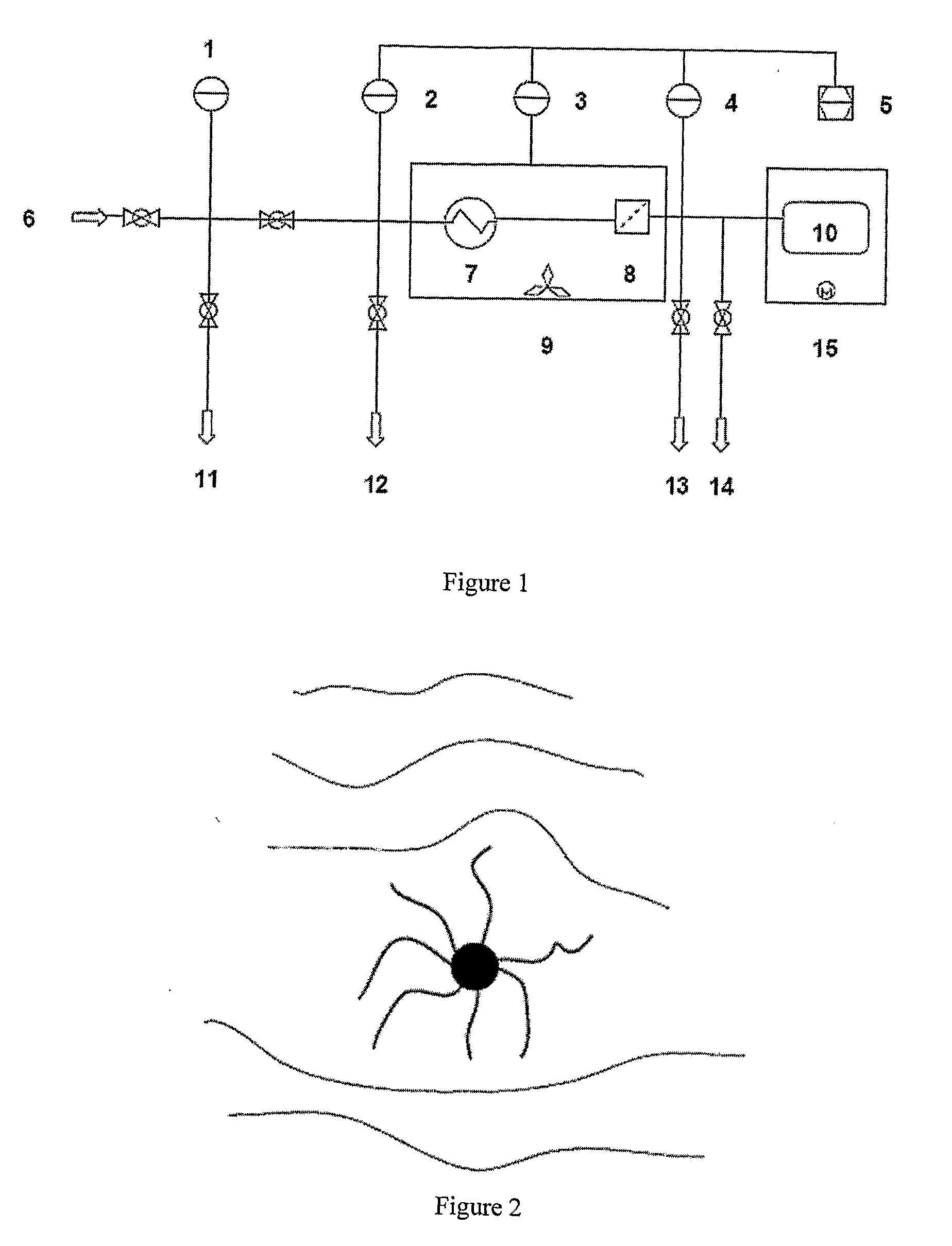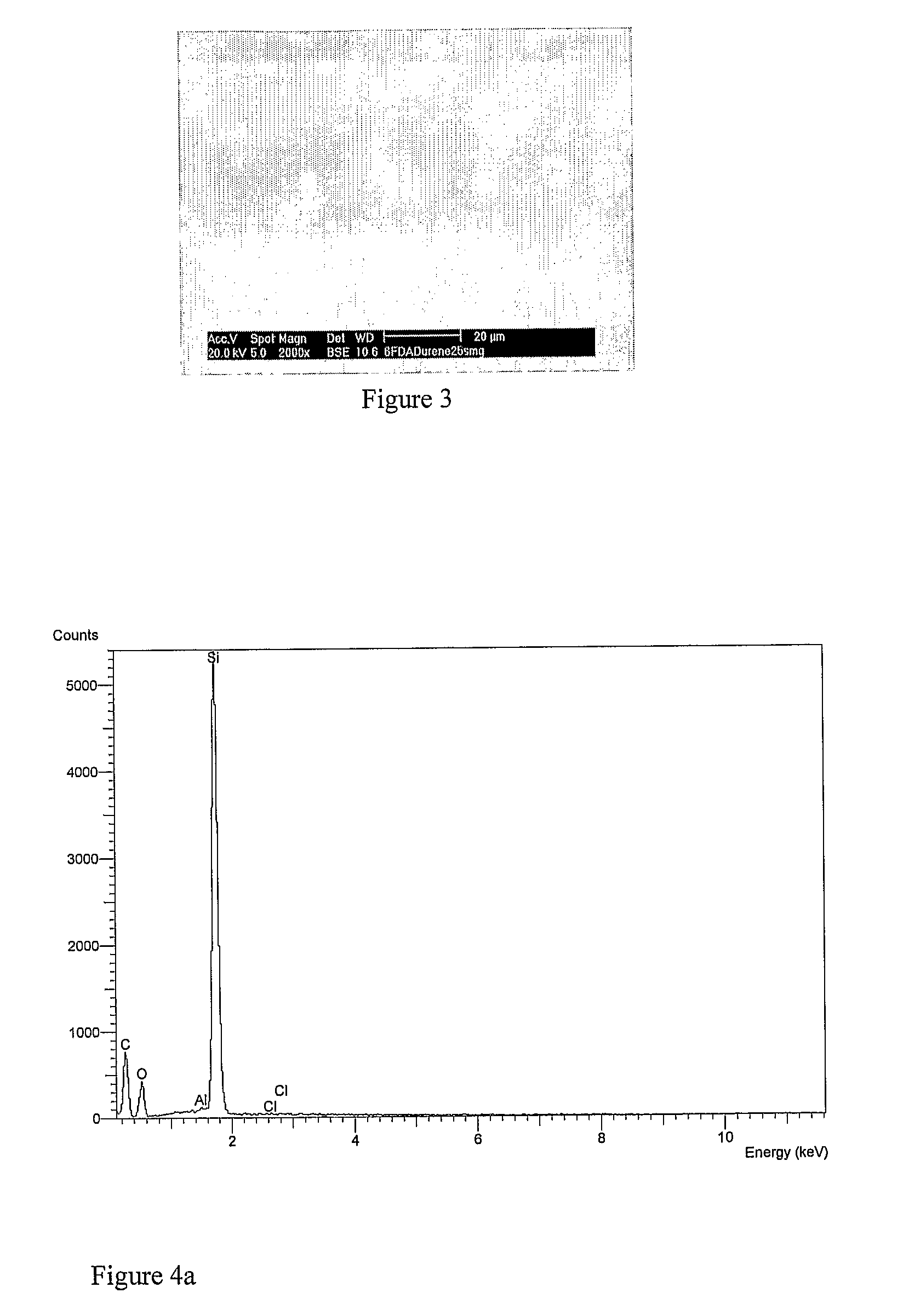Gas separation membranes and processes for the manufacture thereof
a technology of gas separation membrane and process, applied in the field of gas separation membrane, can solve the problems of increasing the permeability of the membrane, reducing the selectivity, and difficult to develop the membrane, and achieve the effect of reducing the selectivity of the membran
- Summary
- Abstract
- Description
- Claims
- Application Information
AI Technical Summary
Benefits of technology
Problems solved by technology
Method used
Image
Examples
example 1
Synthesis of 6FDA-Durene Membranes Incorporating PDMS Core Crosslinked Star-Polymers
[0109]A 10 mL solution of 6FDA-Durene (250 mg) and PDMS star polymer (1.3 mg) in dichloromethane was made up. The solution was pored into a level casting ring (diameter 65 mm) and loosely covered. The casting ring was left overnight to allow the dichloromethane to evaporate. Distilled water was added to allow the membrane to be separated from the glass. The membranes were allowed to air dry overnight and then kept for 4 days at 100° C. to ensure complete remove of all solvents. Membranes were stored in a desiccator prior to usage.
example 2
Single Gas Testing of 6FDA-Durene Membranes Incorporating PDMS Core Crosslinked Star-Polymers
[0110]The membrane from specific example 1 was tested on a constant volume variable pressure single gas rig at 35° C. The gases tested in the order of nitrogen (10 atmospheres upstream pressure), oxygen (10 atmospheres upstream pressure), carbon dioxide (10 atmospheres upstream pressure). The calibrated volume occupied 2173.97 cm3 and was kept at a constant temperature (301.5 K).
example 3
Synthesis of 6FDA-Durene Membranes Incorporating PDMS Core Crosslinked Star-Polymers
[0111]A 10 mL solution of 6FDA-Durene (250 mg) and PDMS star polymer (1.9 mg) in dichloromethane was made up. The solution was pored into a level casting ring (diameter 65 mm) and loosely covered. The casting ring was left overnight to allow the dichloromethane to evaporate. Distilled water was added to allow the membrane to be separated from the glass. The membranes were allowed to air dry overnight and then kept for 4 days at 100° C. to ensure complete remove of all solvents. Membranes were stored in a desiccator prior to usage.
PUM
| Property | Measurement | Unit |
|---|---|---|
| diameter | aaaaa | aaaaa |
| diameter | aaaaa | aaaaa |
| particle size | aaaaa | aaaaa |
Abstract
Description
Claims
Application Information
 Login to View More
Login to View More - R&D
- Intellectual Property
- Life Sciences
- Materials
- Tech Scout
- Unparalleled Data Quality
- Higher Quality Content
- 60% Fewer Hallucinations
Browse by: Latest US Patents, China's latest patents, Technical Efficacy Thesaurus, Application Domain, Technology Topic, Popular Technical Reports.
© 2025 PatSnap. All rights reserved.Legal|Privacy policy|Modern Slavery Act Transparency Statement|Sitemap|About US| Contact US: help@patsnap.com



